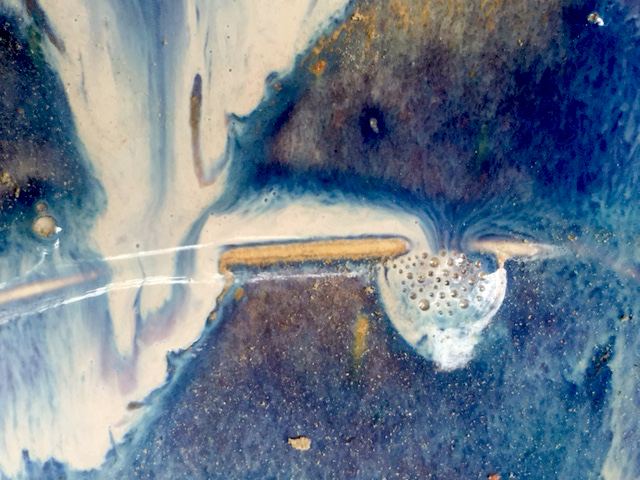Blisters in a reduction fired rutile glaze
This is a common problem with these glazes. The visual effect is very compelling but also punishing! Potters experiment with higher insight-live.com/glossary/8">bisque firing and soaking during bisque. They try cleaner clay bodies. They employ long hold periods at temperature in the glaze firing. But the problem persists. The solution is actually simpler. These glazes have a high melt fluidity and enough surface tension to hold a bubble static during soaks at temperature (no matter how long you hold it). It is better to cool the kiln somewhat (perhaps 100F) and soak at that temperature. Why? Because the increasing viscosity of the melt overcomes the surface tension that maintains the bubbles. You may need to cool more or less than 100 degrees, but start with that.
Pages that reference this post in the Digitalfire Reference Library:
Ceramic Rutile, Soaking, Rutile Blue Glazes

This post is one of thousands found in the Digitalfire Reference Database. Most are part of a timeline maintained by Tony Hansen. You can search that timeline on the home page of digitalfire.com.
